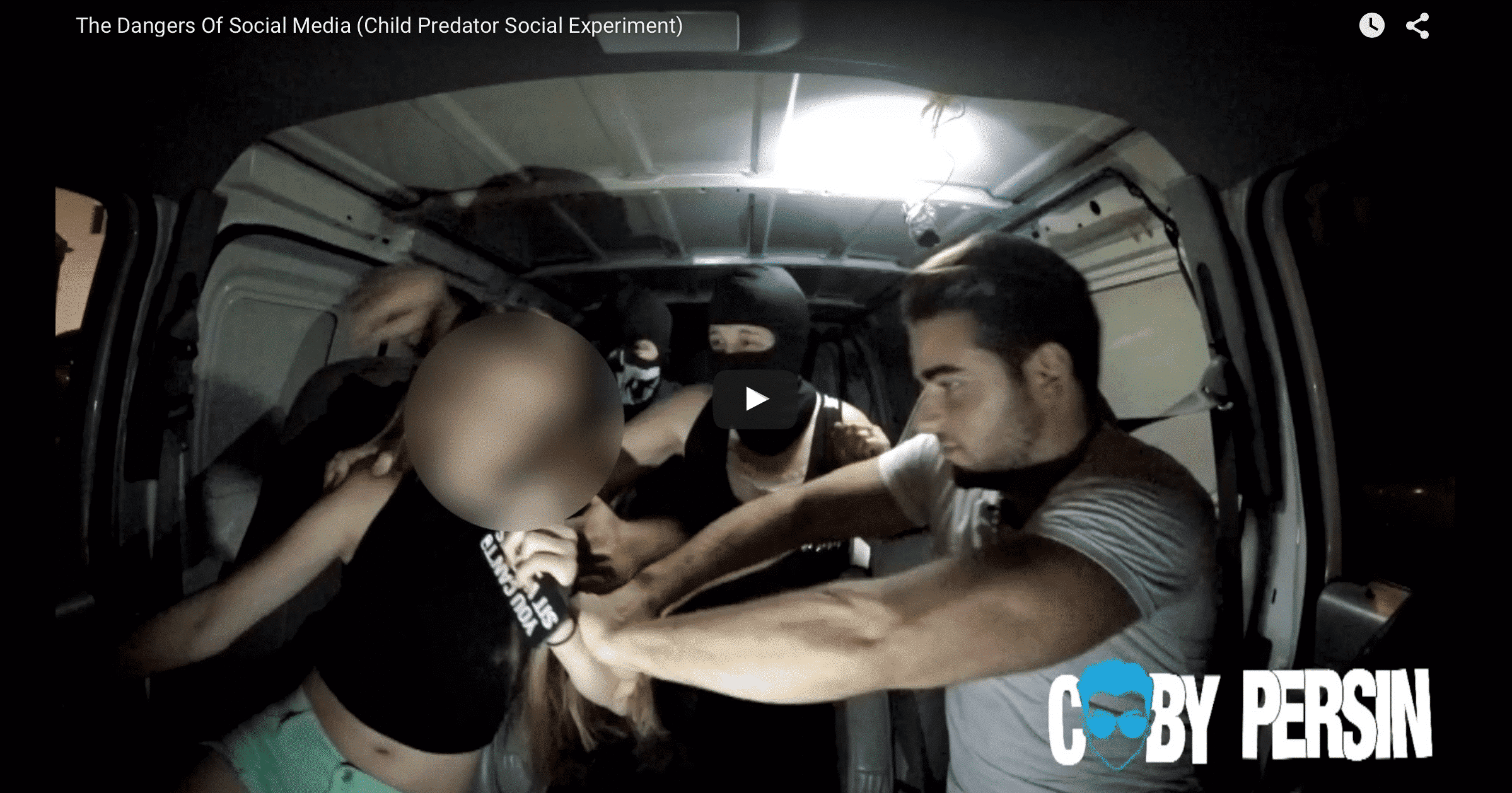
Consider these statistics:
-
92% of teens go online daily
-
Almost three in 10 parents (29%) let their kids use the internet without any restrictions or supervision.
-
More than 70 percent of teens hide some of their online behavior from their parents.
-
39% of teens have exchanged messages with sexual content to other people, while 20% have sent nude or semi-nude photos or videos of themselves.
-
There are over 811,389 registered sex offenders in the United States, and over 100,000 are lost in the system.
-
In 82% of online sex crimes against minors, the offender used the victim’s social networking site to gain information about the victim’s likes and dislikes.
-
One in twenty teenage girls admit to arranging a secret meeting with somebody they met online.
Permissive Internet use is rampant among kids and teens. Children have access to screen media with Internet capacity at younger and younger ages. Parents tell me they simply can’t keep up with technology fast enough to implement effective protection. They say they talk to their kids, but feel incompetent to teach important issues and skills like assertiveness, safety, and sex education. And the discussions that parents do have with their kids about online risk? Telling them about scary outcomes isn’t enough. Kids need regularly coaching and skill-based learning to have any hope of avoiding the sophisticated grooming techniques of a cunning adult.
The most common mistake parents in my practice make with their kids regarding screen media use is overestimating their children’s ability to recognize risk, anticipate consequence, and control impulse.
Yes our kids are brilliant, but they don’t have the soft skills necessary to avoid online trouble. There’s an excellent neurological reason for this. The prefrontal region of the brain, the part responsible for these abilities, does not mature fully until we are 23 years old. That means that teens, even when taught about online risk, simply don’t have the wiring necessary to make sound decisions when maneuvering online. Place that against the dopamine surge in the brain’s pleasure center that sexy online interactions trigger, and you’ve got a curious teen flooded with fantasies of romance that take far higher priority over anxious caution; a losing battle indeed.
Furthermore, the developmental tendencies that are normal for the adolescent stage actually encourage risky behaviors. For example, consider the important impulse to launch. In order to gain the independence they need to become healthy adults, teens progressively venture away from parents (because that attachment is already firmly in place) and work to form stronger attachments with peers. This means they accept peer influence more readily than parental influence. Listen to Mom and Dad or text Billy? Billy is by far the sexier target. Mix this with the omnipotence, idealism, and egocentrism of youth, and you’ve got more ingredients for the recipe for genuine online risk.
Now let’s consider cultural influence. When our daughters tell us, “everyone’s doing it,” she’s telling the truth. Kids are using social media in massive numbers, often unsupervised and unrestricted by parents. That means teens feel falsely confident in their perceived anonymity among other risk-taking peers. Even though everybody’s doing it, many of these young women will go on to fall under the influence of an online predator. And nobody will find out when things go awry. Sad and scary outcomes quickly become buried in silent shame. Nobody needs to be bothered with that ugly reality other than the victim and those who work to help her heal.
So we’ve established that teen wiring, developmental tendencies, and cultural influences lead teens into dangerous online activities. What about family influence? Where are the parents?
Parents are up against lots of obstacles these days. It’s easy to judge. But let’s be honest, parenting is hard! Finding the time, the energy, and the expertise to lock down effective safety on a daily basis is a legitimate challenge. So often parents have real difficulty maintaining a quality connection with their teens. Keeping their attention and spending the time necessary to build skills and really connect is a tough go. We all hope that our kids know they can come to us anytime about anything. But walking the gauntlet between supervising enough while still allowing trust and independence is a tightrope walk.
In Coby’s viral video, he shows three families with daughters that are willingly lured to meet up with a Facebook contact who says he is fifteen years old. The parents are so mortified at their daughters’ dangerous naiveté that they panic, angrily shouting and in one instance trying to shake the sense into his daughter. I, like many viewers, were initially horrified at the fear these young girls were forced to endure. Social experiment, yes, but not one that would ever be allowed past the ethical hurdles a university study would require.
I’ll admit that initially I was angry with those parents for scaring those girls so much. My impulse was to rant that fear and shame is not an effective learning tool, but instead destructive to the trusting, warm parent-child connection necessary to protect. But then I watched it a second time, and then a third, and I realized I’d probably be freaking out just like that if it was my daughter scrambling into the van in a belly shirt. Instead of being destructively reactive like the parents in Coby’s video, we must be proactive and check out expert strategies like those offered in the GKIS Cybersecurity and Red Flags Supplement. Do it now, because we never know if tomorrow will be too late.
I’m the mom psychologist who will help you GetYourKidsInternetSafe.
Onward to More Awesome Parenting,
Tracy S. Bennett, Ph.D.
Mom, Clinical Psychologist, CSUCI Adjunct Faculty
GetKidsInternetSafe.com
Don't worry, we will never spam you.









